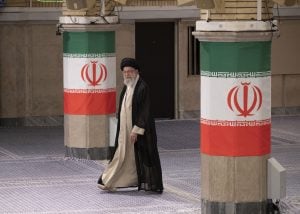The period from 1173 to 1950 marks a transformative era in the political history of India. This timeline includes the rise and fall of powerful dynasties, the advent of foreign rule, the consolidation of the British Raj, and the framing of the Indian Constitution. For AFCAT 2 2025 aspirants, a solid understanding of this historical-political journey is essential, especially for the Static GK section. Here’s a concise overview of the key political developments from 1173 to 1950.
AFCAT 2 2025 Exam Static GK – Polity
1. Delhi Sultanate (1206–1526)
The political landscape of India saw major changes with the establishment of the Delhi Sultanate.
- Mohammad Ghori (1173–1206): He laid the groundwork for Muslim rule in India by defeating Prithviraj Chauhan in the Second Battle of Tarain (1192).
- Qutb-ud-din Aibak (1206): Founder of the Slave Dynasty, also known as the Mamluk Dynasty.
- Other notable dynasties:
- Khilji Dynasty (1290–1320): Alauddin Khilji expanded the empire into southern India.
- Tughlaq Dynasty (1320–1414): Known for administrative reforms and experiments by Muhammad bin Tughlaq.
- Sayyid and Lodi Dynasties: Declined under Ibrahim Lodi, who was defeated in the First Battle of Panipat (1526).
2. Mughal Empire (1526–1857)
The Mughal period brought centralized administration and significant political stability.
- Babur: Founder of the Mughal Empire, won the First Battle of Panipat (1526).
- Akbar the Great (1556–1605): Known for his policies of religious tolerance, Din-i-Ilahi, and centralized administration.
- Shah Jahan and Aurangzeb: While Shah Jahan built architectural marvels like the Taj Mahal, Aurangzeb’s policies led to unrest and the eventual decline of the empire.
- The empire weakened post-Aurangzeb, paving the way for regional powers and eventually the British.
3. Rise of the British Rule (1757–1858)
- Battle of Plassey (1757) and Battle of Buxar (1764): Marked the beginning of British political dominance.
- Regulating Act (1773) and Pitt’s India Act (1784): Introduced by the British Parliament to control East India Company.
- Charter Acts (from 1813 to 1853): Brought major administrative reforms.
- Doctrine of Lapse by Lord Dalhousie: Used to annex princely states.
- 1857 Revolt: Also called the First War of Indian Independence; although unsuccessful, it marked a turning point in Indian polity.
4. British Crown Rule (1858–1947)
After the 1857 Revolt, India came directly under British Crown control.
- Government of India Act 1858: Ended the rule of the East India Company.
- Indian Councils Act (1861, 1892): Introduced limited Indian participation in legislative processes.
- Morley-Minto Reforms (1909): Introduced separate electorates for Muslims.
- Montagu-Chelmsford Reforms (1919): Introduced dyarchy in provinces.
- Government of India Act 1935: Provided for a federal structure and provincial autonomy—laid the foundation for the Indian Constitution.
- Indian National Congress (1885) and Muslim League (1906): Played major roles in the Indian freedom movement.
- Quit India Movement (1942) and Cabinet Mission Plan (1946): Critical in ending British rule.
5. Towards a Sovereign Republic (1947–1950)
- India Independence Act 1947: India was declared independent on 15th August 1947, leading to the formation of India and Pakistan.
- Constituent Assembly (1946–1949): Tasked with drafting the Indian Constitution.
- Chaired by Dr. Rajendra Prasad.
- Dr. B.R. Ambedkar: Chairman of the Drafting Committee.
- Adoption of the Indian Constitution:
- Enacted on 26th November 1949.
- Came into effect on 26th January 1950—India became a sovereign, socialist, secular, and democratic republic.
Conclusion
This period (1173–1950) witnessed monumental shifts in India’s polity—from monarchies and empires to colonial rule and finally to a democratic republic. Understanding this timeline is crucial for AFCAT aspirants as questions related to key acts, revolts, rulers, and constitutional developments are frequently asked in the Static GK section of the exam.




















